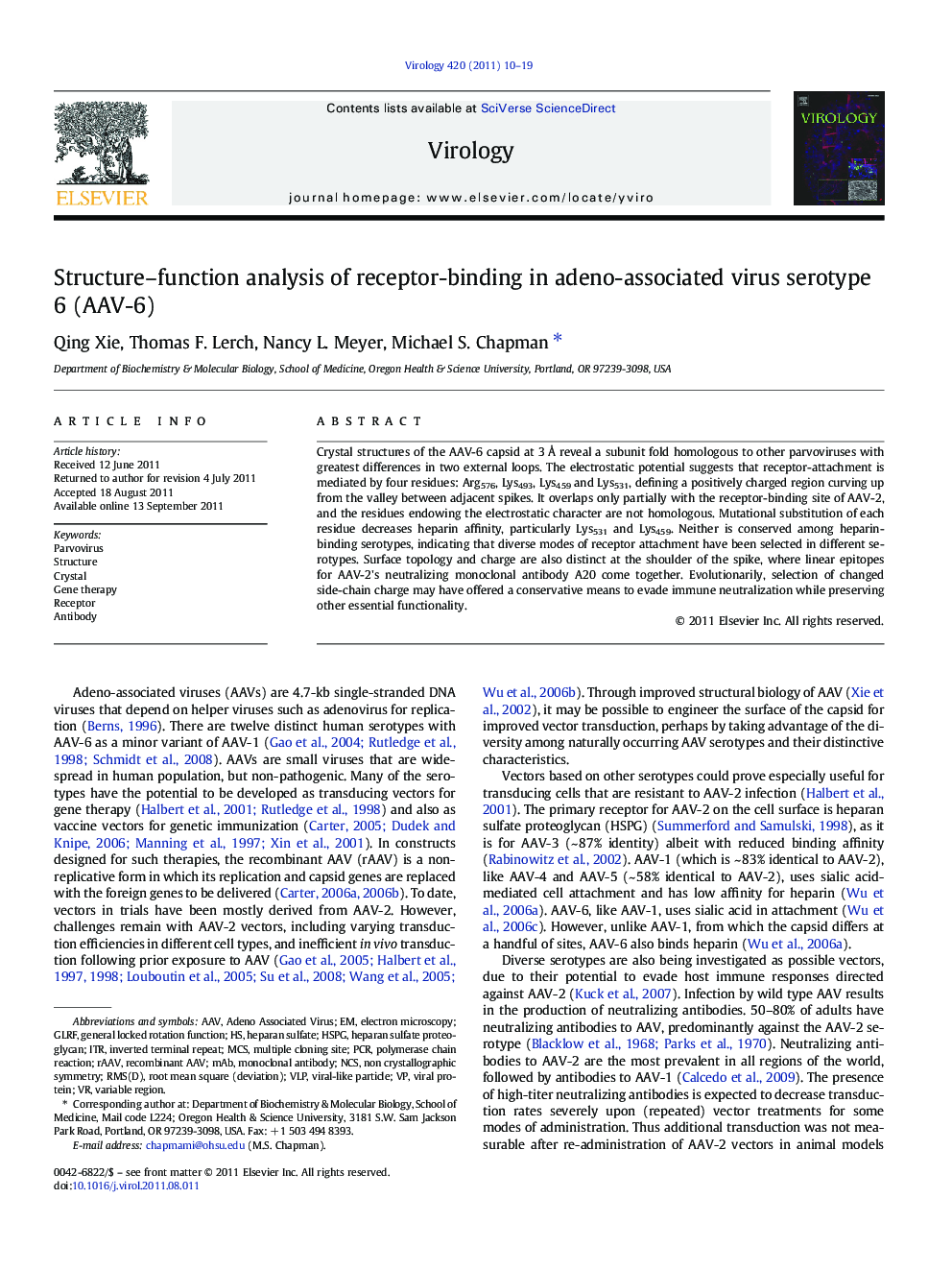| Article ID | Journal | Published Year | Pages | File Type |
|---|---|---|---|---|
| 3424464 | Virology | 2011 | 10 Pages |
Crystal structures of the AAV-6 capsid at 3 Å reveal a subunit fold homologous to other parvoviruses with greatest differences in two external loops. The electrostatic potential suggests that receptor-attachment is mediated by four residues: Arg576, Lys493, Lys459 and Lys531, defining a positively charged region curving up from the valley between adjacent spikes. It overlaps only partially with the receptor-binding site of AAV-2, and the residues endowing the electrostatic character are not homologous. Mutational substitution of each residue decreases heparin affinity, particularly Lys531 and Lys459. Neither is conserved among heparin-binding serotypes, indicating that diverse modes of receptor attachment have been selected in different serotypes. Surface topology and charge are also distinct at the shoulder of the spike, where linear epitopes for AAV-2's neutralizing monoclonal antibody A20 come together. Evolutionarily, selection of changed side-chain charge may have offered a conservative means to evade immune neutralization while preserving other essential functionality.
